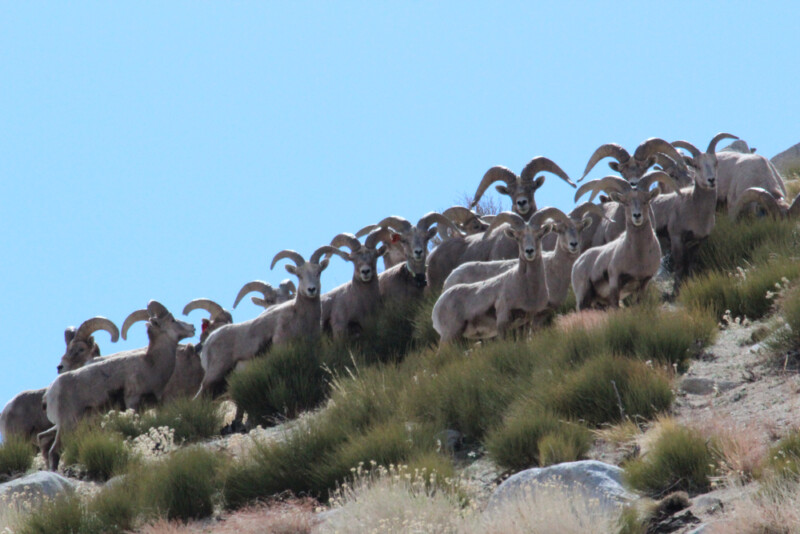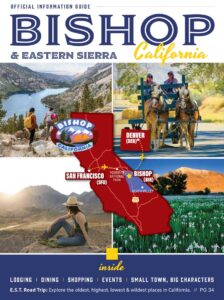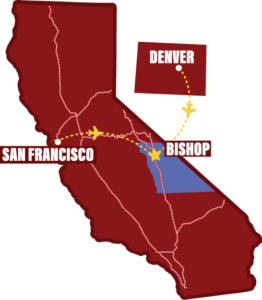Desert Bighorn Sheep

Tough Guys & Gals of the Sierra – Desert Bighorn Sheep
Bishop and its expansive backyard may look dramatic, surrounded on both sides by towering peaks and a high desert landscape, but this area is teeming with wildlife. In spring and fall, millions of birds use the region as a thoroughfare to their destinations. And more than 50% of the species in California call it home year-round. One animal in particular has adapted to these contrasting landscapes: the Desert Bighorn Sheep.
Adapted to the Environment
Compared to their cousins, the Rocky Mountain bighorn sheep, they’re smaller, lighter, and have longer legs, making them more agile in steep, rocky terrain. Although they require freestanding water, these particular sheep can survive for days without it. Even their digestive systems help them absorb nutrients from tough desert plants.
Two Species in Bishop’s Backyard
The Eastern Sierra is home to two different species of bighorn sheep: the Sierra Nevada bighorn and the Desert bighorn. As the name suggests, the Sierra Nevada bighorn lives exclusively in the Sierra Nevada, while the Desert bighorn prefers low desert mountains. One distinct way to differentiate them, aside from their habitat, is the shape of their ram horns.
Where to See Them
These sure-footed climbers prefer the rough, rocky open terrain that allows them to use their vision to detect predators. The steep rocks offer protection against mountain lions and coyotes, which are unable to navigate and climb after the bighorn sheep. As summer heat arrives, they ascend and graze on mountainsides. Your best chance to catch a glimpse of these elusive residents is in winter when they come down into the valleys. This is also when bands of ewes (female bighorn sheep) may join together to form larger groups.
Interesting Bighorn Facts:
- Their horns are composed of keratin, which is the same material that makes up our fingernails.
- As bighorns age, they develop rings on their horns, similar to growth rings around a tree.

